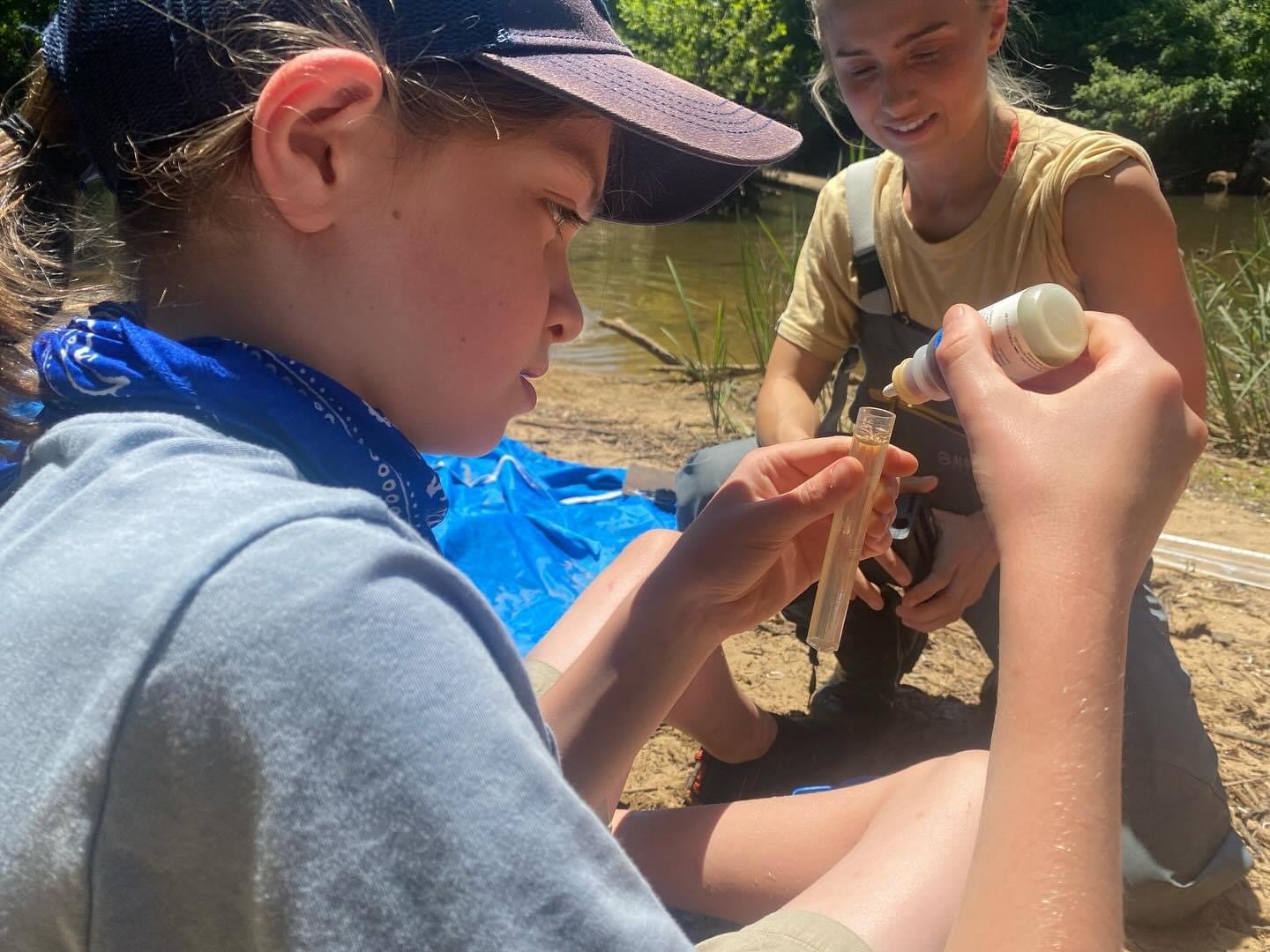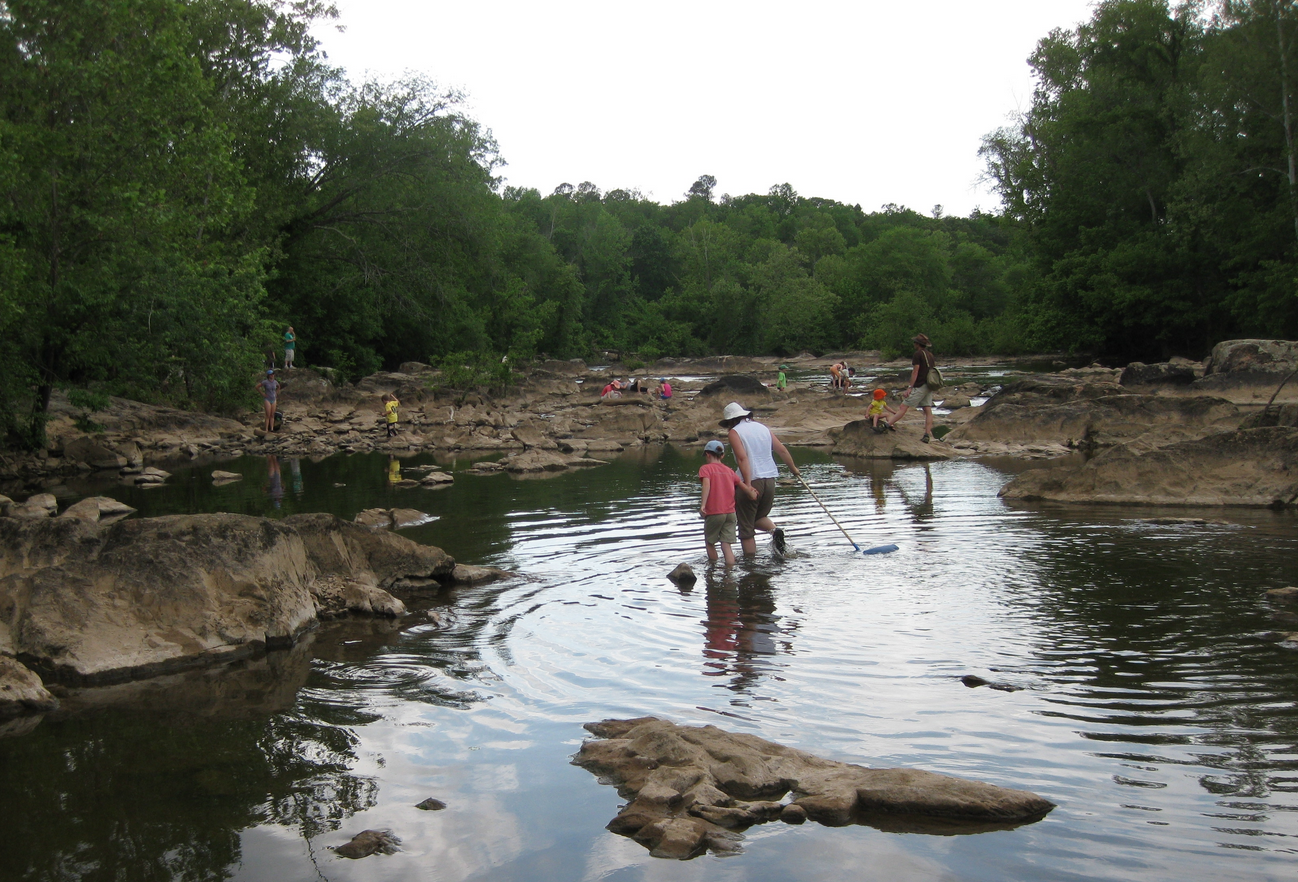
Stream Investigation Program
What is a stream? What lives in it? How can you tell if it's healthy? What are the signs of pollution?
These are the kinds of questions we engage middle and high school-age students from classrooms throughout the watershed. Based on our existing Haw River Watch Program, this middle & high school targets schools near impaired streams in the Haw River watershed. At their stream, students explore and collect stream data using simple physical tests (pH and temperature) and visual assessments of stream bank erosion and algae growth. Students collect, identify, and asses macroinvertebrate diversity as an indicator of stream health. They also learn about their school's ecological address, water intake, and output, including its drinking water source and the receiving streams for stormwater and wastewater. If you are interest in having Haw River Assembly come to your school, please complete this form or email events@hawriver.org.
Program Overview
We start in the classroom with a "What's In Your Watershed" activity, which gives an overview of the problems our watershed faces. Students learn about the impacts of development, wastewater treatment plants, failing septic systems, nutrient enrichment, and urban runoff. They further consider uses of waterways (recreation, drinking water, habitat), environmental justice issues, the positive impact citizen action can have in the watershed, environmental protection regulations, and measures we can all take to improve water quality.
The second component of the program takes place outdoors! We take students to a nearby stream, where they learn to measure its health. Using water quality monitoring methods, students measure the pH, water transparency, air, and water temperature. Then, they will collect, identify, and count macroinvertebrate indicator species. In addition, they study streambank erosion, note riparian buffers, and observe firsthand the impacts of stormwater erosion on their streams.
History
In Spring of 2009, Haw River Assembly launched its Stream Investigation Program that was supported by NC DENR (now NC DEQ) 319 grant from the EPA under the Clean Water Act. This project was created by Jenna Schreiber and Cynthia Crossen. It uses key principles from the Haw River Watch Program. The program is being revived (2024) and will be available for schools across the Haw River Watershed.


